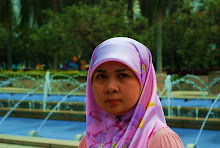Posted by
Shahriah 08B1049
on
Thursday, 13 August 2009

In the staffroom

Computers in the staffroom


one of the teacher using technology to do the lesson plan

Date: 13 August 2008
Day: Thursday
Time: 10.30 - 11.30
Let me tell you a bit about my previous school. It is one of the school which is considered "Sekolah Model". It is also being used as a center for Special pupils to be located under Brunei III. Due to this the, MOE has been generously supporting the school financial needs to better equip the schools with all the technology and school-related equipments possible. (from what i've heard from the teachers).
The school has 2 computer labs, a computer room in the teacher's staffroom, a computer in the library, 4 computers in the admin office, 2 projectors, 3 photocopy machines. This school is also equipped with CCTV all over the school area, speakers installed in all the classrooms and a bell which chimes every hour to indicate the period of a lesson is over. Furthermore the main hall is fitted with a huge screen and a projector(The school sounds incredible right?....)
Now with the A H1N1 situation the school own 6 thermal scanners.
teacher which uses technology in teaching Mathematics
Teacher 1 : Level 2, 30 pupilsThis teacher teaches year 2, the subjects Mathematics and Bahasa Melayu. Technology used is the projector. She prefers to use the projector in Mathematics lesson. All of her pupils comes from a working class family although not all own a computer at home.According to this teacher using projector has its strenths and weaknesses
Advantages
- pupils enjoy learning;
- understanding is enhance;
- teacher can use pictures from the internet which are not found in books;
- teacher make use iwb with the use of projector;
- smooth learnig-teaching process where teacher do not has to write notes on the board.
Disadvatages
- the projector is limited in quantity, therefore its usage is on a first come, first serve basis;
- teacher had to prepare the teaching materials every night;
- sometimes technical problems are unpredictable and teachers lesson plan will have to change.





